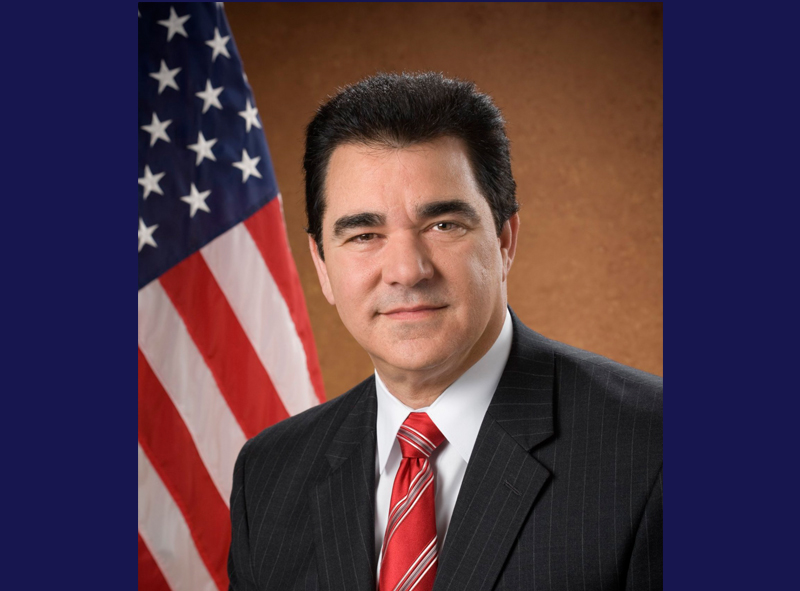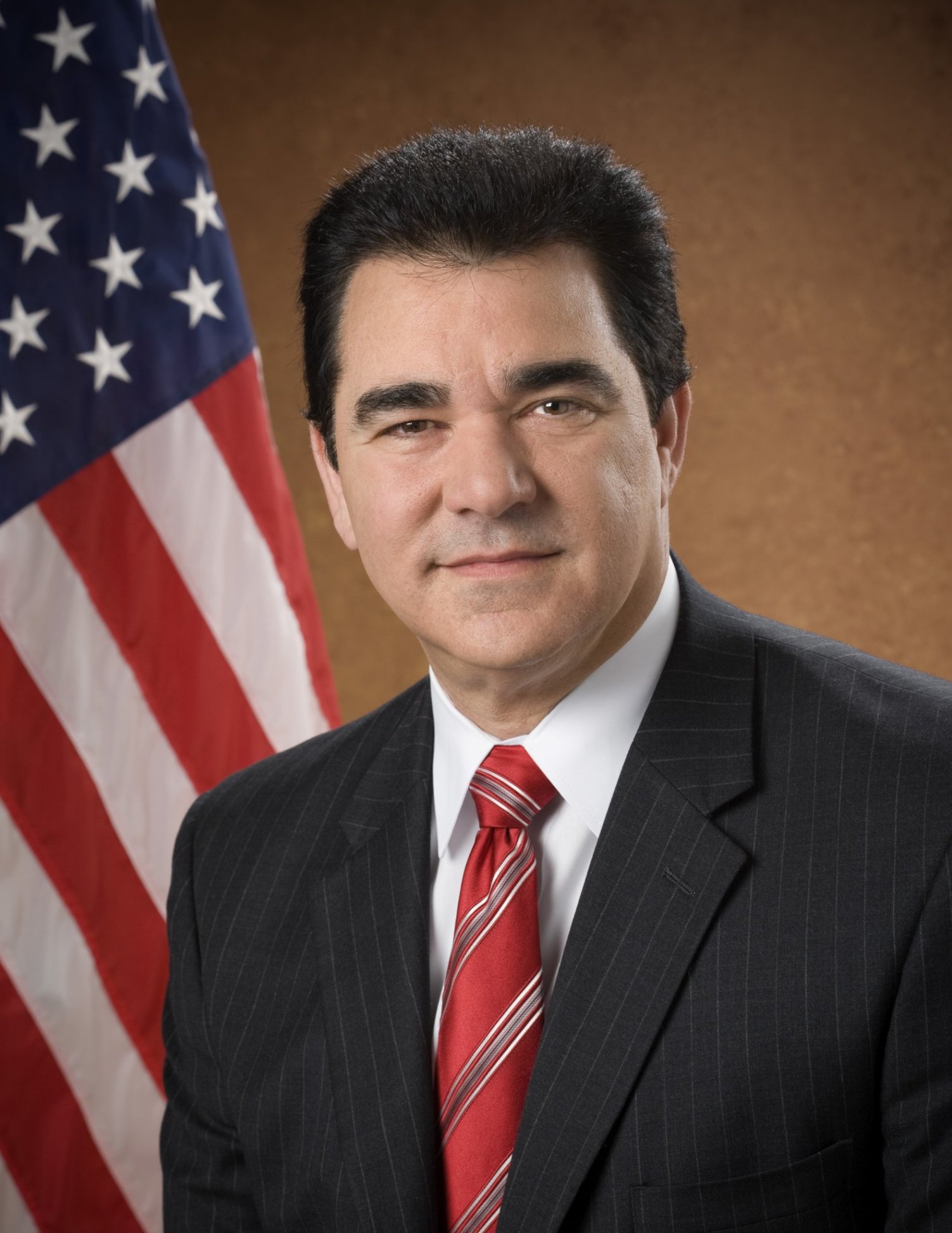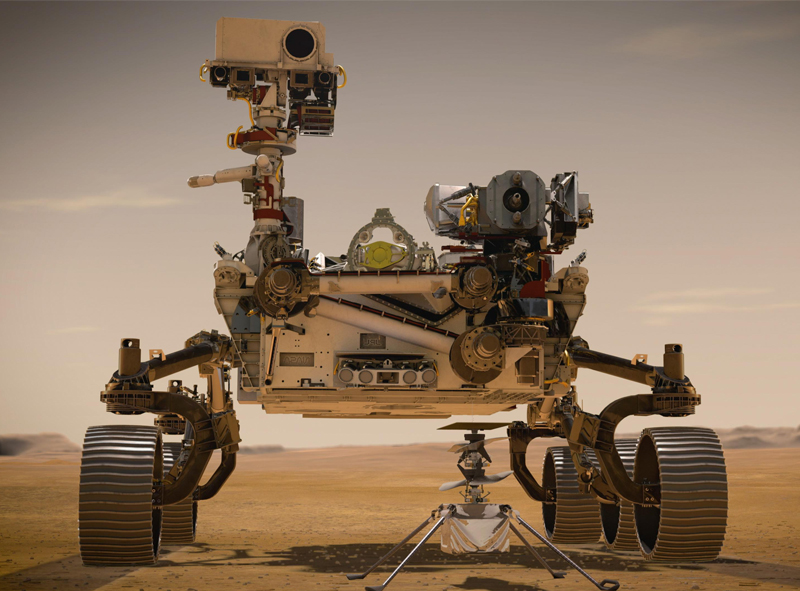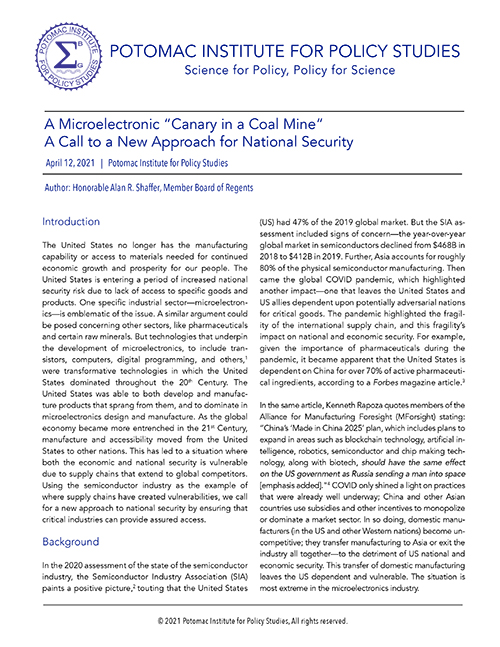Featured

Author: Honorable Alan R. Shaffer, Member Board of Regents
 The United States no longer has the manufacturing capability or access to materials needed for continued economic growth and prosperity for our people. The United States is entering a period of increased national security risk due to lack of access to specific goods and products. One specific industrial sector—microelectronics—is emblematic of the issue. A similar argument could be posed concerning other sectors, like pharmaceuticals and certain raw minerals. But technologies that underpin the development of microelectronics, to include transistors, computers, digital programming, and others,1 were transformative technologies in which the United States dominated throughout the 20th Century. The United States was able to both develop and manufacture products that sprang from them, and to dominate in microelectronics design and manufacture. As the global economy became more entrenched in the 21st Century, manufacture and accessibility moved from the United States to other nations. This has led to a situation where both the economic and national security is vulnerable due to supply chains that extend to global competitors. Using the semiconductor industry as the example of where supply chains have created vulnerabilities, we call for a new approach to national security by ensuring that critical industries can provide assured access.
The United States no longer has the manufacturing capability or access to materials needed for continued economic growth and prosperity for our people. The United States is entering a period of increased national security risk due to lack of access to specific goods and products. One specific industrial sector—microelectronics—is emblematic of the issue. A similar argument could be posed concerning other sectors, like pharmaceuticals and certain raw minerals. But technologies that underpin the development of microelectronics, to include transistors, computers, digital programming, and others,1 were transformative technologies in which the United States dominated throughout the 20th Century. The United States was able to both develop and manufacture products that sprang from them, and to dominate in microelectronics design and manufacture. As the global economy became more entrenched in the 21st Century, manufacture and accessibility moved from the United States to other nations. This has led to a situation where both the economic and national security is vulnerable due to supply chains that extend to global competitors. Using the semiconductor industry as the example of where supply chains have created vulnerabilities, we call for a new approach to national security by ensuring that critical industries can provide assured access.

Post-Moore: Prospects for Novel Patterning of Low Volume ICs
Dr. Mike Fritze, VP
Potomac Institute for Policy Studies
Keynote Talk for the 2021 SPIE Advanced Lithography Conference
Novel Patterning Technologies Section
Feb 22-26, 2021 (Virtual)
Summary: The end of the 50-year-long Moore’s Law based physical scaling of semiconductor chips represents a major paradigm shift. Along with technological implications, this major inflection point will usher in an era of substantially new business models in the worldwide semiconductor industry. Future performance gains will be made by clever design and architecture developments, not physical scaling of chips. This means than we will see an increased trend of design customization to a particular function.
The old business model was based on increasingly more expensive fabrication facilities which had to produce parts in very high volumes to be cost-effective. Fairly generic chip types were made in very high volumes and utilized by the major system companies. The new model will be driven by a shift to a larger variety of custom chips made in smaller volumes. The big system companies are realizing this trend towards customization and developing their own internal designs to differentiate themselves with performance gains. This is a major business model shift from the past, where these companies bought outside generic parts and adapted them to their needs.
This big change is simply a sign of the maturing semiconductor industry. Value add and profit potential will now be dominated by those organizations that can execute clever new designs and integrate a variety of chip technologies into a custom advanced package. Some legacy companies may shift their strategies accordingly to adapt, but new companies will undoubtably be formed to take advantage of these new opportunities. This is a particularly attractive time for smaller new entrants in this field. There will likely be specialist “integration” fabs whose main role will be to integrate chips made in various technologies. The concept of “hardware as a service” will also see increasing traction.
We are already seeing a resurgence of the trend towards more custom ASIC chips for example. The key challenge here is to lower the costs of customization which are very high at the lower volume range of interest today. This presents new opportunities to optimize low volume fabrication via implementation of direct write and other lower volume process strategies.
The major paradigm shift we are currently undergoing in the semiconductor industry will provide many new opportunities for companies that are innovative and flexible particularly in the design, architecture and integration areas. The increased interest in higher mix lower volume custom chips will drive entirely new fabrication flows based on new technologies. Finally, this shift represents a move towards more common interests between industry and the US Government/DoD. This new overlap will help spawn productive public-private partnerships which will help industry develop new technologies and provide the US Government/DoD with desirable access paths for these.

 The Potomac Institute is proud to announce that Ted Glum has joined our Board of Directors. A professional who has spent his career at the intersection of science and policy, Mr. Glum will bring to the Board decades of experience, primarily from his time as Director of the US Defense Microelectronics Activity (DMEA).
The Potomac Institute is proud to announce that Ted Glum has joined our Board of Directors. A professional who has spent his career at the intersection of science and policy, Mr. Glum will bring to the Board decades of experience, primarily from his time as Director of the US Defense Microelectronics Activity (DMEA).
DMEA provides a vital service to the acquisition programs and operational fielded systems, and its flexible foundry enables it to provide critical parts for American intelligence, special operations, and combat missions. Mr. Glum was appointed DMEA Director at the Activity’s inception in 1996 and served in that position until his retirement in 2018. He worked in this capacity for 22 years, reporting to the Assistant Secretary of Defense for Research and Engineering, (ASD (R&E)); as Director, Ted was responsible for over $2 Billion of microelectronics technology programs and numerous classified programs for the Department of Defense (DoD) and Intelligence Community.
“We’re honored to welcome Ted Glum to the Potomac Institute Board of Directors,” said General Al Gray, Chairman of the Board. “Ted’s experience and dedication made him an incredible asset to the intelligence and defense communities – we look forward to the insights he will bring to the highest levels of the Institute.”
Before his time at DMEA, Mr. Glum served as Chief of the Science & Engineering Division within the US Air Force Material Command from 1994 to 1996. Among his accomplishments and awards are the Federal Laboratory Director of the Year, Exemplary Civilian Service Medal, the Air Force Science and Technology Award, and the Air Force Engineer of the Year award.
Ted is a graduate of California State University where he received a Bachelor of Science degree in Electrical and Electronics engineering. He has participated in a variety of educational programs including the Executive Development Program on Science, Technology and Public Policy.

 On February 18, humankind witnessed another huge step into the solar system. NASA's Perseverance rover, 6 1/2 months after leaving an Earth gripped by a worldwide pandemic, touched down on an unknown portion of Martian terrain. Now, it is expected to hit a new milestone this week. The new robotic addition to Mars is the product of years of hard work and holds the hopes and dreams of millions – why else would 10.9 million people sign up to have their names physically sent aboard the rover?
On February 18, humankind witnessed another huge step into the solar system. NASA's Perseverance rover, 6 1/2 months after leaving an Earth gripped by a worldwide pandemic, touched down on an unknown portion of Martian terrain. Now, it is expected to hit a new milestone this week. The new robotic addition to Mars is the product of years of hard work and holds the hopes and dreams of millions – why else would 10.9 million people sign up to have their names physically sent aboard the rover?
Perseverance’s technology will provide researchers with much-needed data on Mars's past, present, and future. Not only is the rover equipped to search for biosignatures of past microbial life and measure the planet’s current climate, but its myriad sensors will help chart the course for future human missions to the Moon, Mars, and beyond.
That’s not all Perseverance offers, however. Perseverance also brought with it a small helicopter known as Ingenuity, which will attempt the first powered flight on another planet. According to NASA, Ingenuity’s singular mission is to conduct flight tests in the thin atmosphere of Mars – it carries no scientific instruments. Having moved out to a designated area chosen for its flatness and lack of obstructions, it will attempt its first lift off as soon as April 11. Ingenuity’s tests are expected to last for 30 Martian days, after which Perseverance’s exploration of Jezero Crater will begin.
Charles Bolden, who is a former NASA Administrator under President Obama and a member of the Potomac Institute Board of Regents, said this mission could be the last step before sending humans to Mars. “I’m really excited about Perseverance because it's going to give us an opportunity conduct such experiments as taking carbon dioxide out of the Martian atmosphere in order to extract breathable oxygen or oxygen for propellant.” Bolden said.
In 2015, during his time as NASA administrator, Bolden spoke of the planned Perseverance mission. Mars Daily reported, "[NASA will send a] new rover to the Red Planet in 2020 that will help us prepare for [a] human mission.” This planned rover – now a success – means that we are “closer to sending human beings to the Red Planet than ever before in human history." So, is the next step goal to have boots on the ground by 2030? Bolden said probably not that soon, but it may be possible by the late 2030s, and he has an idea of what it may take to get humans there. “I firmly believe we're going to take an army of robots and put them on the surface prior to humans getting there. They'll build out the habitat, and I actually think it will be subterranean. I think we're going to burrow into the ground to protect against radiation. And I'm not sure the scientists all agree yet on what the intensity of Mars windstorms can get to. I've heard some studies that have said Mars can get some pretty good windstorms going on every once in a while,” Bolden said.
With Perseverance touched down and collecting data, former astronaut and Potomac Institute Board of Regents member and Senior Fellow, Dr. Kathy Sullivan shares this optimism. “I absolutely believe that the current Mars exploration goals are attainable technically. The bigger question is who has the will to see them through and a vision for the future they can usher in. “[Perseverance’s] successful landing in complex terrain could allow consideration of more landing sites. Its powerful scientific instrument suite will surely tell us more about the physical, geologic, and geochemical properties of the surface, all of which could factor into landing site selections. Additional data on the atmosphere and surface radiation environment will help refine human health and safety constraints on landing craft, habitat, and space suits. All the new data helps us better understand the challenges a human mission must overcome and the risks it would entail,” Sullivan said.
The Potomac Institute is immensely proud of this step forward, and we offer our most heartfelt congratulations to NASA and the Perseverance team. Through our Center for Enterprise, Exploration, and Defense in Space (CEEDS), we have provided recommendations and advice on the future of spaceflight since our inception in 1994.
“The Potomac Institute is committed to advancing the interconnection of science and policy, and I can think of no field in which this duality is as critical as space exploration,” said Potomac CEO Dr. Jennifer Buss. “As we wrote in a recent CEEDS report, continued space exploration has a unique effect on the human species, raising aspirations skyward and inspiring dreams in hearts and minds across all ages. We’ve always had the why of space exploration – through its state-of-the-art sensors and data collection abilities, Perseverance will help us get to the how we’re missing.”

 The Potomac Institute is proud to welcome Brian Hibbeln as a Senior Fellow. Mr. Hibbeln is a Venture Partner at SineWave Ventures, a firm dedicated to accelerating new technologies, and he has spent 23 years as an Air Force Reserve Officer with assignments at both the National Air and Space Intelligence Center (NASIC) and the National Reconnaissance Office (NRO). His final assignment was to the Mission Support Directorate of the NRO.
The Potomac Institute is proud to welcome Brian Hibbeln as a Senior Fellow. Mr. Hibbeln is a Venture Partner at SineWave Ventures, a firm dedicated to accelerating new technologies, and he has spent 23 years as an Air Force Reserve Officer with assignments at both the National Air and Space Intelligence Center (NASIC) and the National Reconnaissance Office (NRO). His final assignment was to the Mission Support Directorate of the NRO.
"I was excited to join the Potomac Institute because they have always been widely understood to be the premier think tank in Washington supporting tech and policy issues," said Hibbeln. "The impact they have made has been nothing short of incredible."
"Brian brings a wealth of civilian and military knowledge to the Potomac Institute. His passion for emerging technology has been clear throughout his entire career. We're so excited to work with him and mobilize this passion to advance the mission of the Institute," said Potomac Institute CEO Dr. Jennifer Buss.
Upon release from active duty, Mr. Hibbeln was awarded the Joint Meritorious Service Medal, a certificate of achievement from the Director of the CIA, and the NRO Silver Medal. In 2001, he was recalled to active duty to serve in Operation Enduring Freedom. During this tour, he led a number of new initiatives utilizing National, Civil, and Commercial space systems to combat terrorism and provide operational support to forces and the Intelligence Community. During this time, he also supported the White House Military Office as White House Social Aide to the President.
After serving in the Air Force, he spent over 20 years as a senior civilian in the US Government. He served as the Assistant Deputy Undersecretary of Defense for Special Capabilities in the Office of the Secretary of Defense (OSD). He also served as the very first director of the Special Capabilities Office (SCO), where he managed over $2B in resources. He was responsible for the oversight of Joint Capability Technology Demonstrations (JCTD) related to intelligence, space, airborne, and other remote sensing operations. He also oversaw the development of special technologies in support of the Combatant Commands, the Joint Staff, the Intelligence Community, and forward deployed operational users.
Mr. Hibbeln recently served as the director of the Naval Postgraduate School's Remote Sensing Center-National Capital Region, where he managed over $8B in US Government contracts. The Remote Sensing Center supported the DoD and US Intelligence Community with technology demonstrations and operational support to combatant commanders around the world. He previously served as the Chief Scientist and Chief Systems Engineer of Measurement and Signature Intelligence at the Intelligence (MASINT) Staff at the NRO. He was responsible for the development of new overhead sources and methods to address hard intelligence problems and led the development of advanced space-based MASINT architectures. In this position, he provided recommendations to the Director of Central Intelligence, Congressional Staffs, senior policy and decision makers, and numerous operational and intelligence customers. Many of these programs transitioned to operational programs of record that continue to provide significant support to ongoing operations.

